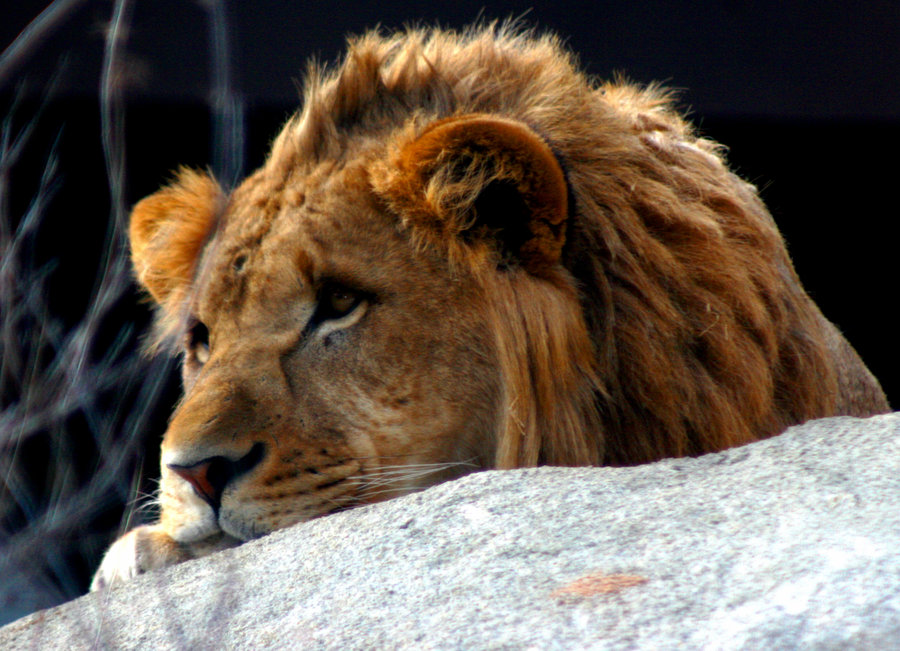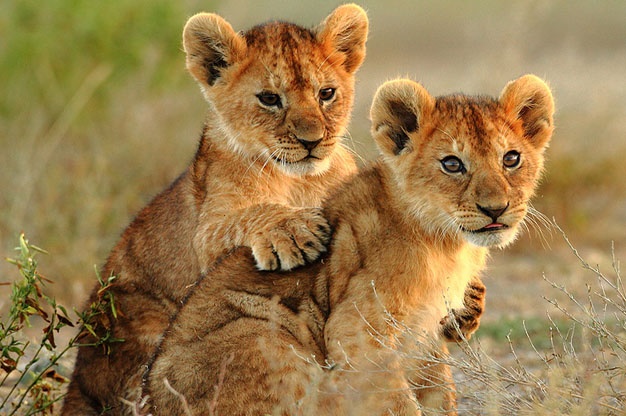Lions undoubtedly are the most majestic and fearless of wild animals. Following the Tiger, they are the second biggest animal in the world with a genus of the “Felidae” cat family, including tigers, leopards and jaguars.
Lions are known for their ruggedness and ferocity, they are very social and travel in a community known as pride. Here are the 10 facts about Lions you should know.
1. Lions don’t live in the jungle

Lions mostly live on savannah and grasslands. Sometimes they inhabit forest, shrubland and desert. But never the jungle. So it’s also incorrect to think of lions as the kings of the jungle. They actually are the kings of the savannah.
2. A lion’s roar can be heard from over 8 km away

A roar is a sign of dominance, so the louder the better as far as lions are concerned. Lions use these impressive roars to warn rivals and show off how big and bad they are.
This is one of the great sounds you can hear on a safari and it really echoes through the night. Males have a deeper roar than the lionesses.
The incredible roar is caused by a ligament in the larynx. This ligament is stretched to enable more air to transit the vocal cords, making an incredibly deep and loud sound. Note that this ligament is merely found within the biggest cats – lions, and tigers. So it’s only these animals that will roar.
3. The color of Lion’s coat varies from region to region
It is found that lions that live in areas where it is either cooler or have higher humidity levels tend to have darker fur – such as the desert-adapted lions in Namibia and the black-maned lions of the Kalahari.
You can also find White Lions, but these are not true albinos but are rather genetic variants with strongly reduced pigmentation that gives them a white coat. Surprisingly, Wild White lions seem to thrive just as well as their normal counterparts despite their different coloring.
4. Lions can snooze for 20 hours a day

The king of the savannah is often the easiest of all the big cats to spot on safari. They don’t hide away and spend most of the day in the same place.
Lions love to sleep, particularly after they’ve just finished a big meal. Also, note that they’re not actually sleeping 20 hours a day. They’re often snoozing with one eye open.
On a game drive, it’s relatively common for a pride of lions to nod off within the shade created by your vehicle. you’ll drive on the brink of the large cats and that they suddenly see some shade – such encounters are a fantastic reference to your wild side.
5. Lion numbers have dropped from 200,000 to just 23,000

The species has been cutting half in number, every twenty years, after half of the twentieth century since firing methods have been invented and used to kill them.
The 90% drop in the lion population has occurred in a little over 100 years. This is really one of the saddest facts about lions. Yet in some places, these majestic predators are still hunted legally.
6. Lions are extinct from 26 countries they previously roamed.

These magnificent cats once roamed all over Africa, along with portions of Asia and Europe. They are now limited to East and Southern Africa, with a scattering of individuals in West Africa and Sasan-Gir National Park in India.
Lions are now extinct in Congo, Egypt, Israel, Saudi Arabia, Syria, Gabon, Gambia and Iraq. They are also believed to be extinct in a further seven African countries, including Ghana, Guinea, Mali and Togo.
7. There is no fixed breeding season for lions
There is no set breeding season for the Lions. While pride females will also synchronize the timing of breeding, particularly after the pride of the new dominant males, to ensure the full food and maternal care available to the cubs.
Lions will mate for three days nonstop about every thirty minutes (each mating lasts about 20 seconds)! This is to ensure fertilization over the time of the female oestrus so that the cubs are born as soon as possible, enabling the male pride to be covered for longer.
8. Lions don’t hunt or eat every day

Hunting requires a lot of energy and it is not always necessary. Instead, these predators usually stuff themselves to bursting point at a single sitting.
On average, the African lion has to consume 5-7 kg of meat every day that they are alive and healthy. But if pride comes down on a buffalo, then a lion will eat 35 kg of meat in one sitting room! If enough food is available, these cats will consume an astounding 15% of their body weight in one meal.
How often a pride hunt is dictated by the prey. Hunting Cape buffalo is hard but rewarding work, so pride that does this in the Okvango Delta will only need to eat every five to six days. Those living predominantly off zebra will need to hunt more often.
Nevertheless, these cats will still be hoping for a shot. They’ll eat it if a simple meal crosses their way, even if they’re not hunting. Much like we’re going to eat a cupboard full of snacks, even though we’re not starving.
9. Lions don’t eat Hyenas
A hyena would not really be much of a well-earned meal or a snack needed for a lion, even when the cat has starved at the height of the dry season as a matter of fact, hyena flesh is not even that nutritious; so if a lion killed a hyena, it will not gain much from consuming it, so it is very unlikely that hyena flesh will provide the promise of food.
But still, lions routinely kill hyenas, particularly males, without necessarily eating them, primarily due to dietary overlap. Sure enough, as well as other predators in the African savannah, lions see hyenas as massive rivals for food, territories and survival, and thus aim to kill them when possible.
10. Lion cubs weigh just 1.5 kg when they are born

A little lion cub is so small and light that you can place it in a pet carrier bag and display it in a shopping mall (or wherever people show off their puppies and kittens).
When they are born, They are only 1.5 kg which is less than 1% of a lion’s adult weight but they quickly develop into 150-250 kg carnivores.
Also, Check 10 Interesting facts about Sea Turtles you didn’t know